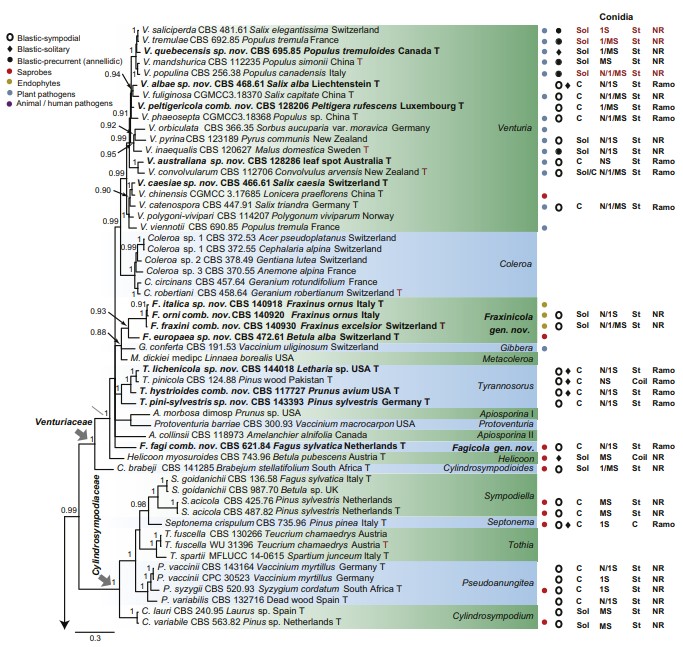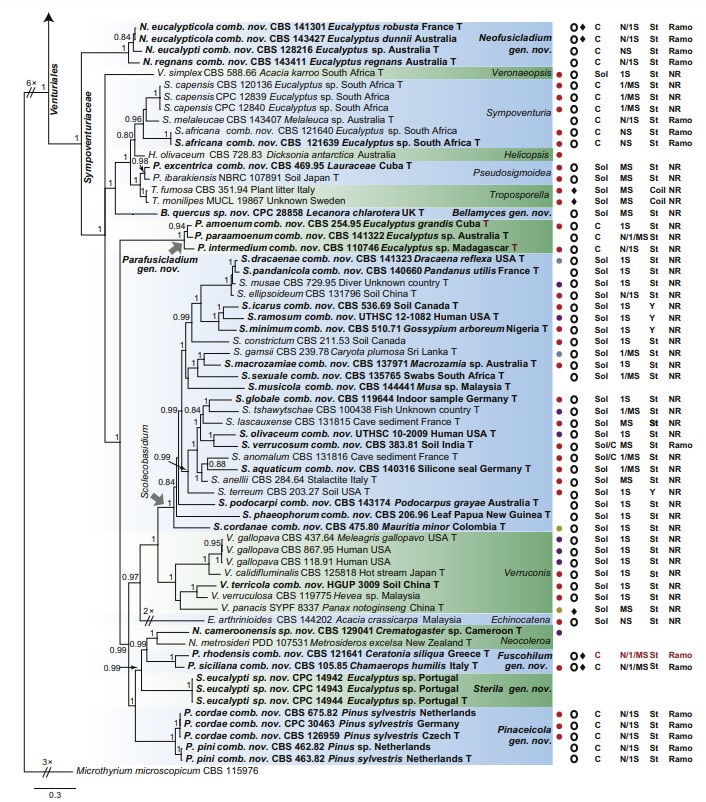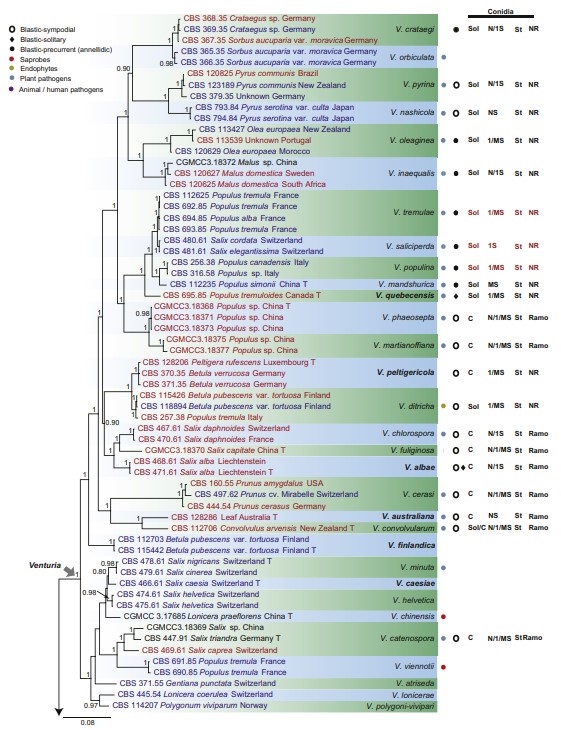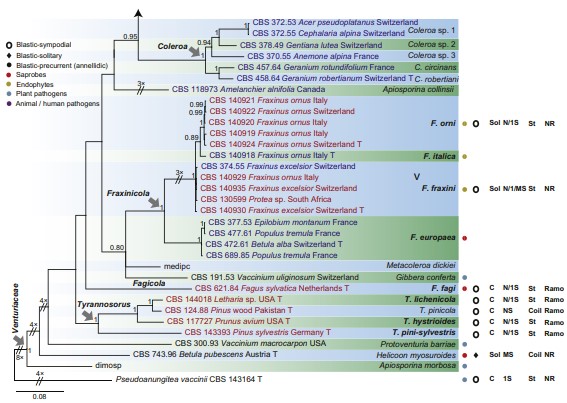Fagicola fagi (Crous & de Hoog) Crous, M. Shen & Y. Zhang ter, comb. nov.
MycoBank number: MB 831586; Index Fungorum number: IF 831586; Facesoffungi number: FoF 12060 ; Fig. 12.
Basionym: Fusicladium fagi Crous & de Hoog, Stud. Mycol. 58: 209. 2007.
Description and illustration: Crous et al. (2007b).
Typus: Netherlands, Utrecht Province, Baarn, Maar- schalksbosch, on decaying leaves of Fagus sylvatica (Fagaceae), 1 Oct. 1984, G.S. de Hoog (holotype CBS H-10366, culture ex-type CBS 621.84 = ATCC 200937).
Notes: Fagicola is proposed based on Fagicola fagi (as Fusicladium fagi), which is saprophytic on leaves of Fagus sylvatica collected in the Netherlands. A multigene phylogenetic analysis indicated that Fagicola fagi is sibling to other genera of Venturiacaeae (Figs 1, 2).

Fig 1. Consensus phylogram (50 % majority rule) of 691 952 trees resulting from a Bayesian analysis of the combined alignment of ITS, LSU, tef1, tub2 and rpb2 sequences of Venturiales. Bayesian posterior probabilities (PP) > 0.80 are shown at the nodes and the scale bar represents the expected changes per site. Some branches were shortened to facilitate layout. The tree was rooted with Microthyrium microscopicum (CBS 115976). Culture collection numbers, substrates and countries are indicated behind the species names. Those highlighted in bold are new taxa or new combinations proposed in this study, and type strains are marked with “T” (ex-type in black, ex-epitype in red). Relevant morphological characteristics plotted are abbreviated as follows: Sol – conidia solitary, C – conidia in chains, NS – aseptate conidia, 1S – 1-septate conidia, MS – multi- septate conidia (septa ≥ 2), St – straight or slightly curved conidia, Coil – coiled conidia, Y – Y-shaped conidia; Ramo – ramoconidia present, NR – ramoconidia not observed; ? – asexual morphology not available (either from references or from sporulation induced in this study); and morphological characters plotted in red means strains failed to sporulate in this study and plotted values are taken from the original description, observation of this study or related references. Other characteristics are explained in the legend.

Fig 1. (Continued).

Fig 2. Consensus phylogram (50 % majority rule) of 42 902 trees resulting from a Bayesian analysis of the combined alignment of ITS, LSU, tef1, tub2 and rpb2 sequences of Venturiaceae. Bayesian posterior probabilities (PP) > 0.80 are shown at the nodes and the scale bar represents the expected changes per site. Some branches were shortened to facilitate layout. The tree was rooted with Pseudoanungitea vaccinii (CBS 143164). See title of Fig. 1 for an explanation of the characters plotted on the tree. Strains in red text sporulated in this study, while those in blue text failed to sporulate and those in black text were not studied.

Fig 2. (Continued).

Fig. 12. Fagicola fagi (culture ex-type CBS 621.84) asexual morph. A. Colony on OA. B– E. Conidia in simple or branched chains arising from conidiogenous cells. F, G. Brown, aseptate or 1-septate conidia. Scale bars: B–G = 10 μm.
